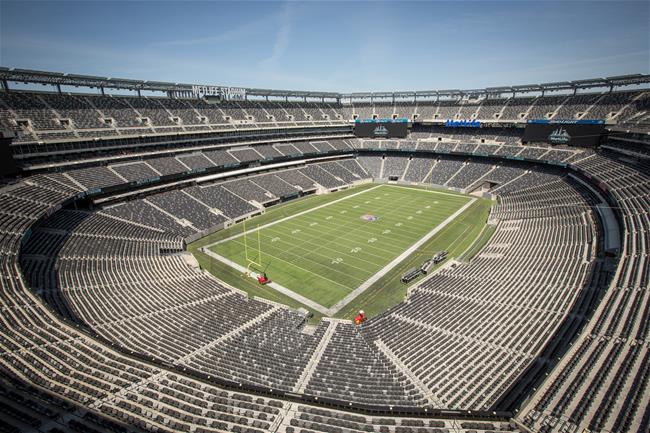NFL stadiums could experience up to $11 billion in cumulative losses by 2050 as a result of escalating climate threats, according to a new report from the climate risk analysis firm Climate X.
The new analysis studied 30 NFL stadiums that have exposure to significant climate hazards like flooding, wildfires, and storm surges under a high-emissions scenario. Each stadium was ranked by a “total loss percentage” that compared the projected climate-related damages to the stadium’s current replacement value. For example, if a stadium worth $1 billion has a total loss percentage of 1.5% per annum, its projected damages by 2050 could reach approximately $400 million or close to 40% of its current replacement value.
For the venues with the created climate risks, MetLife Stadium in New Jersey was projected to incur the highest total percentage loss of 184% with cumulative damages exceeding $5.6 billion by 2050 due to its low elevation and exposure to surface flooding and storm surges. California’s SoFi Stadium was forecasted to absorb a cumulative loss percentage of 69%, with losses of $4.38 billion, primarily due to increased surface flooding risks in an urban coastal environment. And State Farm Stadium in Arizona was estimated to experience a 39% total loss, with $965 million in cumulative damages due to increased flooding risks in a high heat, arid climate.
But at the other end of the spectrum, Lumen Field in Seattle and Lambeau Field in Green Bay were projected to have much lower relative loss rates. Lumen Field had a lower risk due to Seattle’s temperate climate and limited exposure to extreme heat events while Lambeau Field’s Wisconsin location keeps it out of harm’s way from hazards including wildfires, cyclones, and storm surges.
“This report is a wake-up call for the NFL, stadium owners, and local governments,” said Lukky Ahmed, CEO and founder of Climate X. “The stadiums most at risk are looking at significant financial and operational challenges. At the same time, some stadiums show resilience, proving that strategic adaptation can make a difference. We hope this analysis sparks proactive steps to protect these key assets and ensure their long-term viability.”
Photo courtesy of MetLife Stadium











